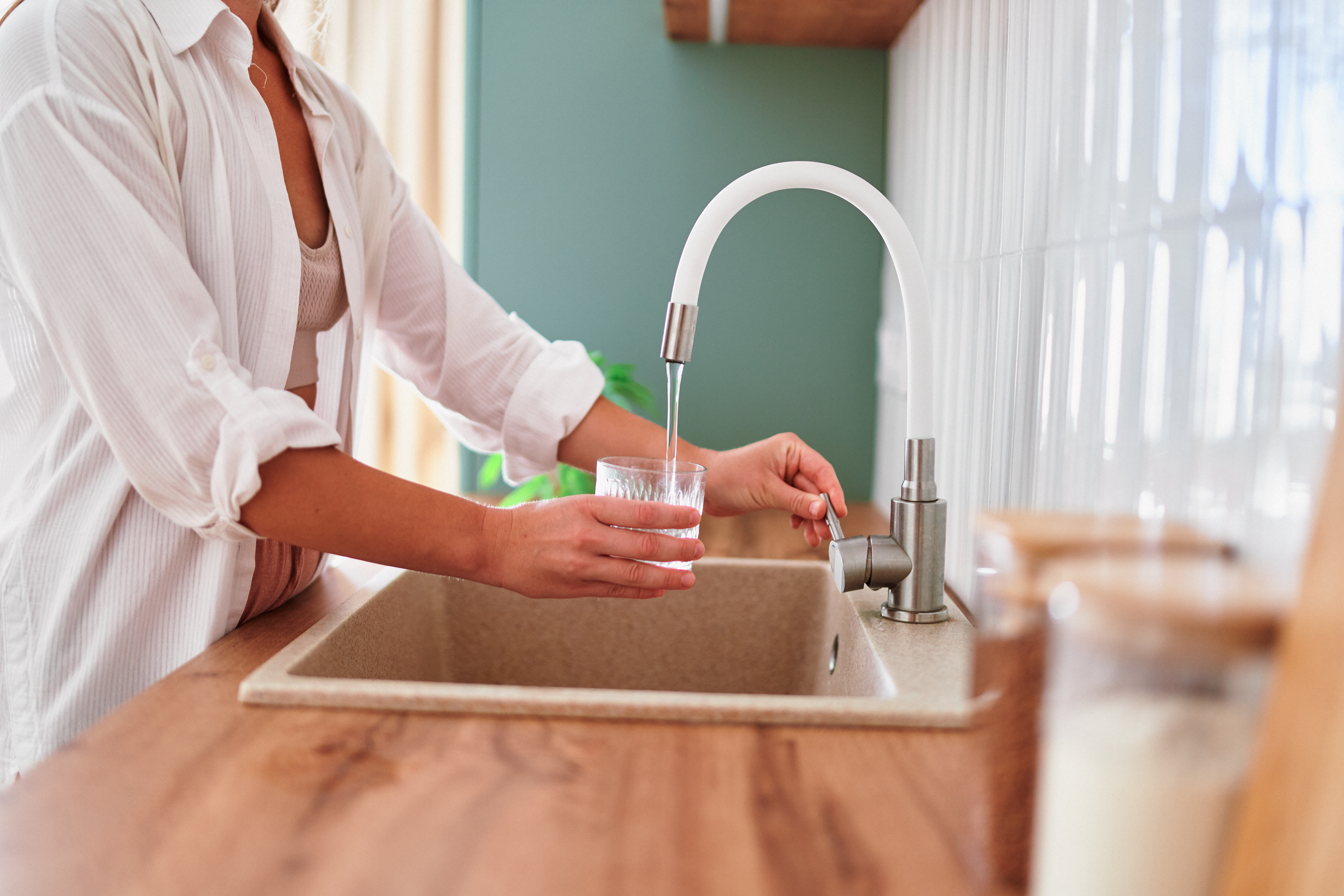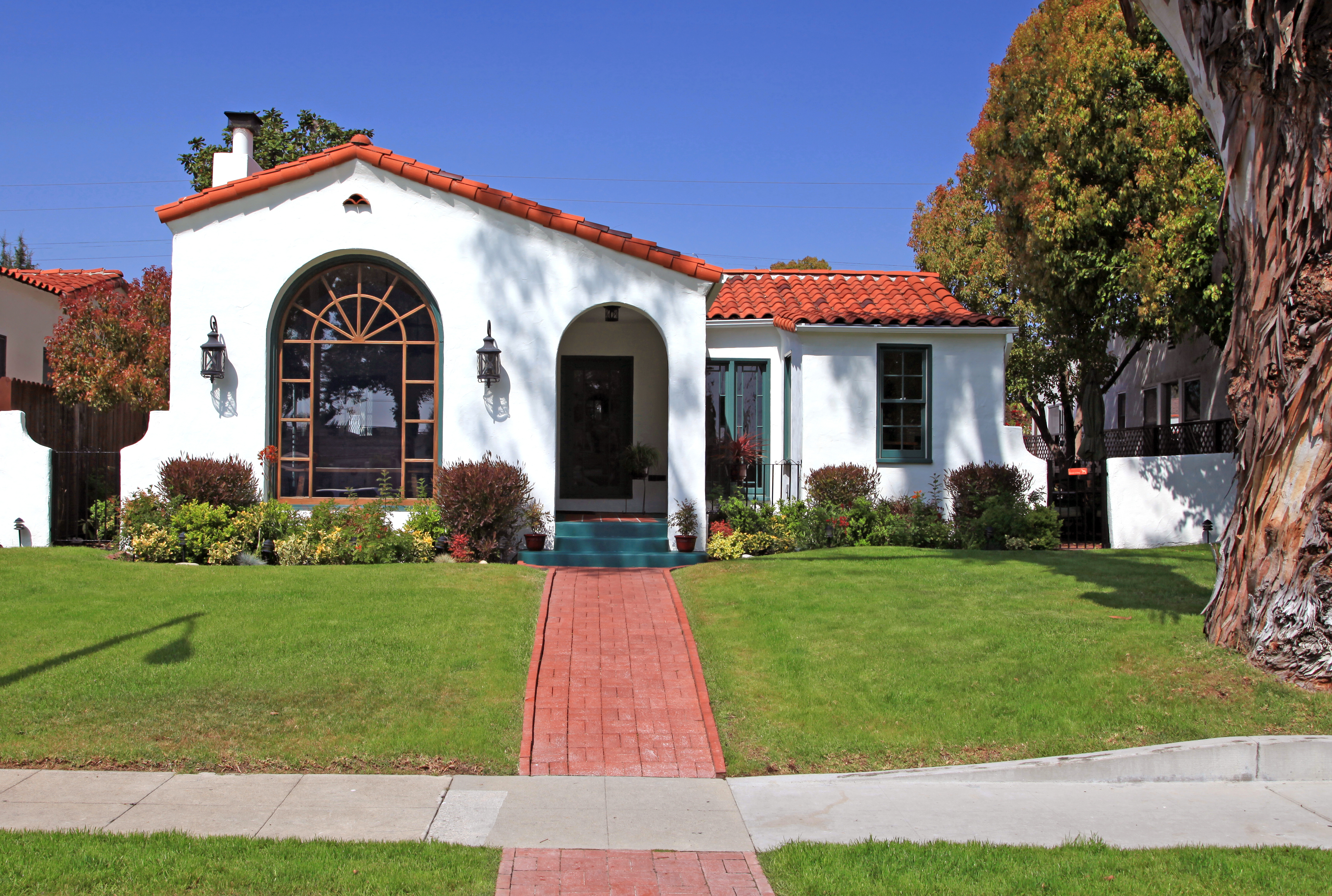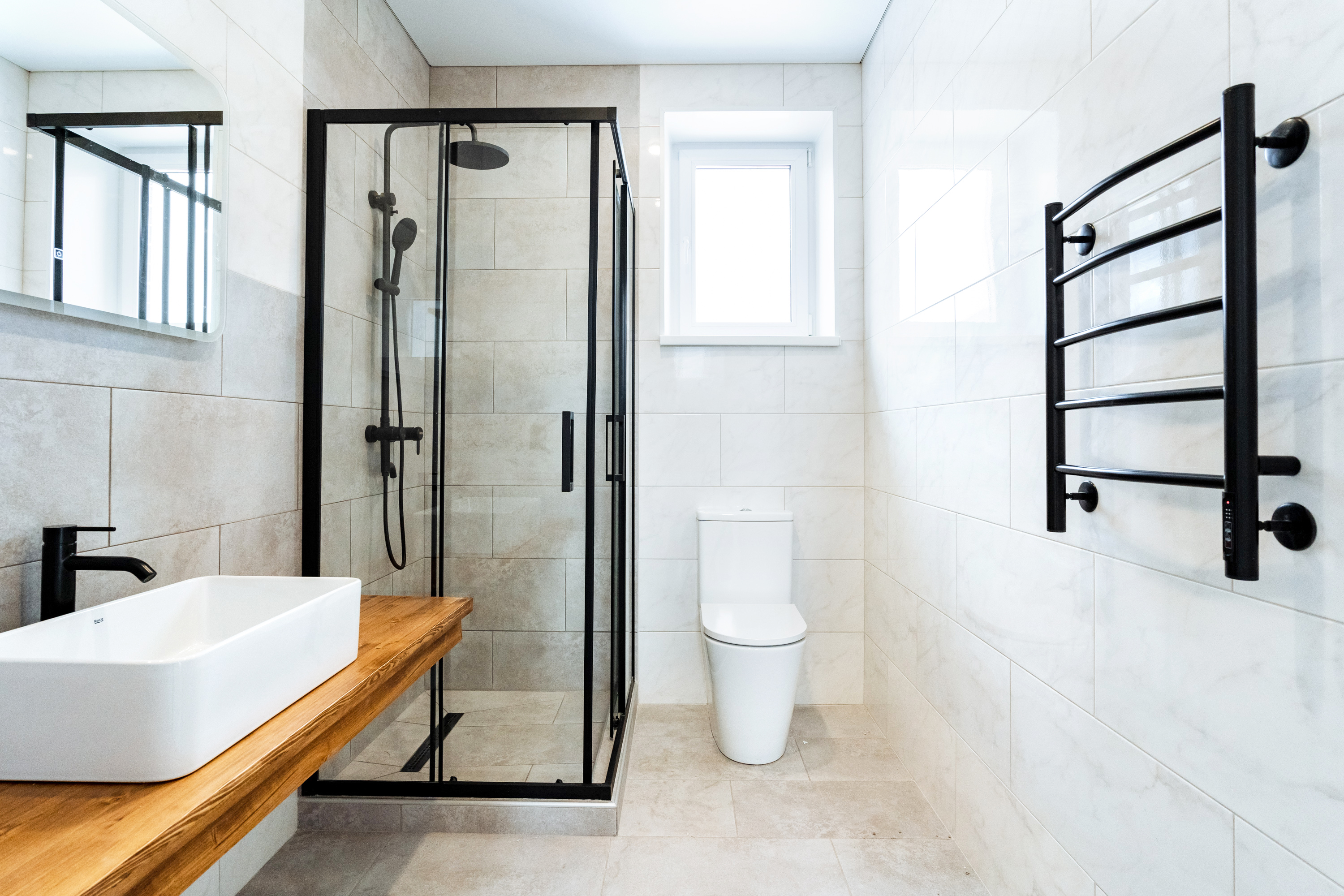
Discover what impacts main water line repair costs in Los Angeles, such as soil conditions and permits, so you can confidently plan your project.
You’ll be a piping expert in no time


Common plumbing pipes are galvanized steel, copper, ABS, PVC, CPVC, and PEX.
Galvanized steel and cast-iron pipes are rarely used in homes.
Many homeowners choose to replace copper pipes with PEX.
PVC pipes are best for drainage but pose environmental concerns.
A professional plumber can help determine the best type of pipe for your home.
Let’s be honest: When you lie in bed awake at night, chances are you’re not thinking about your plumbing pipes. Your home’s plumbing may be the last thing on your mind—until something goes wrong. That’s why it’s important to understand the various plumbing pipe types, including which ones play a role in transporting drinking water, sewage, and stormwater drainage, so you can choose the right one and know its purpose.


When it comes to types of plumbing pipes, PEX, or cross-linked polyethylene, is the new kid on the block. Since its emergence in the late 1990s, it’s become a superhero in the residential plumbing world because of its affordability, durability, and functionality.
Unlike copper and steel, PEX doesn’t rust or corrode. In addition, PEX is packaged in a coiled tube, which means it can usually accommodate the twists and turns of your system without needing to be segmented, spliced, and joined. Without those joined elements, you have less risk of costly pipe leaks and line breaks. However, PEX is best suited for just hot and cold water supply lines.
| Pros | Cons |
|---|---|
| Rust resistant | Not recommended for drain lines |
| Less prone to leaks | Shorter life span |
| Easier to install | Can’t be recycled |
Best used for: New residential homes
Most homes today have at least some PVC piping. PVC, or polyvinyl chloride, has been used since the 1950s. It’s a popular alternative to traditional steel or copper pipes because PVC pipes don’t rust, corrode, or degrade over time. PVC is also lighter, significantly less expensive, and easier to install, maintain, and repair than copper and steel pipes.
One major downside is that PVC is not suitable for hot water supply lines. That means you’ll need to limit your use of PVC to waste drainage and allow copper or steel to do the hot water work. Additionally, PVC outgassing poses a health and environmental concern. Over time, PVC releases volatile organic compounds (VOCs) into the air.
| Pros | Cons |
|---|---|
| Won’t corrode | Not recommended for hot water supply |
| Budget-friendly | Releases VOCs |
| Easy to install | Can’t fit in tighter spaces |
Best used for: Waste drainage
Though chlorinated polyvinyl chloride (CPVC) looks similar to PVC piping, don’t let its name fool you. Like PVC, this material contains a flexible thermoplastic called polyvinyl chloride—only it’s chlorinated for added flexibility. CPVC has a much higher chlorine content, making it a superior choice over PVC. It also has non-corrosive properties and is easier to install than copper.
In terms of drawbacks, CPVC isn’t recommended for outdoor use because it’s sensitive to UV rays. It can also become brittle over time, making it less stable than copper pipes.
| Pros | Cons |
|---|---|
| Lightweight and flexible | Sensitive to UV rays |
| Can handle high water pressure | Not ideal for frequent temperature changes |
| Low maintenance | Becomes brittle over time |
Best used for: Homes in need of repairs
Acrylonitrile butadiene styrene (ABS) pipes are another plastic material for plumbing. The most obvious visual difference between ABS and PVC pipes is that ABS usually comes in black. ABS pipes are durable, budget-friendly, water-resistant, and corrosion-resistant, which is why you’ll find them in sewer systems, drains, and electrical insulation.
Like other plastic plumbing pipes, ABS is susceptible to UV rays, meaning it’s not meant for aboveground, exterior pipe systems. According to the U.S. Environmental Protection Agency (EPA), ABS also contains Bisphenol A (BPA), a known toxin that can negatively impact the environment and may cause cancer. You should avoid using ABS pipes for drinking water for this reason.
| Pros | Cons |
|---|---|
| Easy to install | Sensitive to UV rays |
| Water- and corrosion-resistant | Contains the toxin BPA |
| Good for drain piping | Not suitable for drinking water pipes |
Best used for: Underground drain pipes
Galvanized steel has been used in homes for decades. This material is heavy-duty, which can be both beneficial and disadvantageous. It’s thicker and heavier than other commonly used pipes like PVC, ABS, and PEX, making it more durable. Galvanized steel is malleable, so it’s easier to manufacture and create custom piping for your home’s layout than cast iron.
Galvanized pipes have a metal layer coating designed to corrode before the pipe. But once the protective coating has ebbed away, the steel pipes may begin to rust. If you notice discoloration or particles in your water, this can be a sign that your galvanized pipes are failing. Because steel pipes tend to be heavier and more unwieldy than other types, they can also be more difficult to repair or replace. This issue can drive up the labor cost if you hire a local plumber to do the work.
| Pros | Cons |
|---|---|
| Durable | Difficult to repair |
| Good for custom pipes | Corrosion can release lead |
| Long life span | Prone to chips and cracks |
Were used for: Drainage and venting in older homes
Like galvanized steel pipes, cast-iron pipes were commonly used in older houses—primarily for sewage systems. Today, however, they’ve mostly been replaced with PVC and other easier-to-install pipes. Cast iron is very durable and often used in the automotive and cooking industries, where it can handle extremely high temperatures—hence the cast-iron pan.
Cast iron pipes tend to be more brittle compared to other metals. While they’re typically corrosion-resistant, this is not the case for seawater. Also worth mentioning is that cast-iron pipes give off a metallic taste in tap water because of the iron rusting inside the pipe.
| Pros | Cons |
|---|---|
| Works with high temperatures | Easily corrodes from saltwater |
| Durable | More prone to leaks |
| Good for sewage and drainage systems | Not suitable for main water lines |
Were used for: Sewage in older homes

Copper pipes are also very common in U.S. homes. They first appeared in the 1930s but gained popularity around 1960. Despite the high upfront cost of installing them, copper pipes have a long life span, won’t contaminate the water supply, and can handle high water temperatures, so they’re a good option for your home’s water lines. There are three types of copper pipes, L, K, and M, which differ in thickness. Most homes use type M for interior plumbing.
Keep in mind that copper can corrode, especially at the joints where pipe segments meet and join soldered fixtures. If you have copper pipes and your water has a green or bluish hue, that can mean your pipes are corroding. If your copper pipes were installed after 1986, when the EPA banned the use of solder and other plumbing elements containing lead, then lead contamination shouldn’t be a concern.
| Pros | Cons |
|---|---|
| Lightweight and easy to install | Expensive |
| Life span up to 70 years | Possible metallic flavor to drinking water |
| Can handle high water pressure | Not recommended for well water systems |
Best used for: Hot and cold water
Understanding your plumbing system and, in particular, the different plumbing pipe types in your home can help keep the water flowing smoothly and safely, whenever and wherever you need it.
| Type | Cost (Per Linear Foot) | Application |
|---|---|---|
| PEX pipes | $0.40–$4 | Water supply lines, radiant heating |
| PVC pipes | $0.50–$3 | Drainage systems, sewer systems, venting |
| CPVC pipes | $0.50–$3 | Water supply lines, water heaters |
| ABS pipes | $1–$11 | Drainage systems, sewer systems, venting |
| Galvanized steel pipes | $3–$8 | Custom piping, drainage, venting |
| Cast-iron pipes | $10–$20 | Drainage systems, sewer systems, venting |
| Copper pipes | $2–$12 | Water supply lines, heating systems, drainage systems |
It’s a good idea to enlist the help of a local plumber to help you determine which pipes are your best option based on the following factors:
Your budget: The ease of installation, the size of your home, and required maintenance affect overall plumbing pipe costs.
Your water type: Depending on where you live, your water may be corrosive (like in coastal areas).
Your local building codes: Always refer to your local plumbing codes to ensure you adhere to the municipality’s specific requirements for designing and amending a plumbing system.
Your exposure to sunlight: Ultraviolet (UV) rays deteriorate the quality of plastic pipes over time, decreasing their life span and quality.
Your soil characteristics: Soil with excess rocks, moisture, and other materials can degrade less durable pipes.
Your desired water pressure: Wide, durable pipes, such as plastic, are best for high water pressure.
You should replace your pipes as they approach the end of their typical life span, or if they are experiencing frequent leaks and problems. The life span of popular residential pipes is as follows:
PVC: At least 100 years
PEX: At least 50 years
CPVC: 50 to 75 years
ABS: About 50 years
Copper: 50 to 100 years
Galvanized steel: 40 to 100 years
Cast iron: 50 to 100 years
Even if you perform meticulous maintenance, there may come a day when you need to replace a section of piping in your home. Pipes have a limited life span, and though PVC pipes can last 100 years, a material like PEX or ABS will generally last no more than 50 years. Luckily, your pipes will give you a few warning signs.
Constant Clogging: Weakened, rusted, or damaged pipes have rough edges that catch debris. In rarer cases, you may find that a tree root has grown through an outdoor pipe. Luckily, a plumber can typically cut out the damaged piping rather than replace the whole system.
Noise: Rattling, gurgling, hissing, vibrating, and banging noises are all signs that your pipes could be wearing down. This may be from built-up debris moving through the pipes, loose pipes from worn-out fittings, or water pressure issues. Leaks can also create noisy pockets of air called airlocks.
Water Pressure Issues: Low water pressure can point to a leak, corrosion, or repeated clogs that require a pipe replacement. High water pressure, on the other hand, can prematurely wear out pipes and cause leaks, burst pipes, and broken appliances.
Discolored Water: This signals an issue with either the water main or plumbing inside your home. If a main breaks, it will stir up sediment, which should eventually clear when the city fixes the problem. If the issue stems from corrosion within your pipes, you may need to replace them. If you notice any signs that your pipes are failing, call a local plumbing repair service. Plumbing issues can compound, and a small leak repair is generally more affordable than the cost of burst pipe repair.
From average costs to expert advice, get all the answers you need to get your job done.

Discover what impacts main water line repair costs in Los Angeles, such as soil conditions and permits, so you can confidently plan your project.

Replacing a water main in Los Angeles is expensive, but certainly not the nation’s highest—or even California’s. Living in the Hills or on the coast can affect the total cost.

How much does a plumber cost in Los Angeles? Learn what impacts plumbing costs in the City of Angels and how to hire the best plumber in LA for your project.

It’s a big issue when no cold water is coming out of the faucet. Whether it’s a pipe problem or something else, take these steps to identify the cause and get cold water flowing again.

You never know when learning how to unclog a toilet will come in handy. Get to know these eight methods for the next time things stop flowing.

Cutting pipes can be easy, but this job requires some safety measures. Learn how to cut metal pipes quickly and safely for any plumbing project.